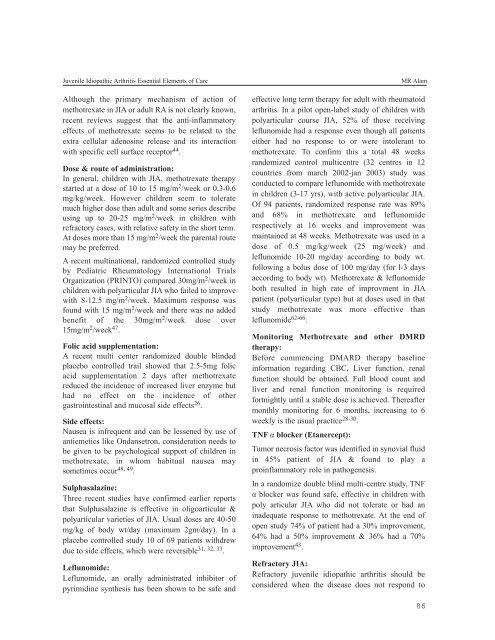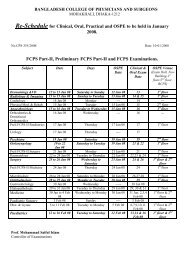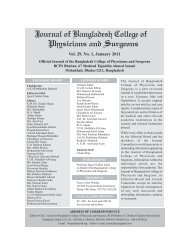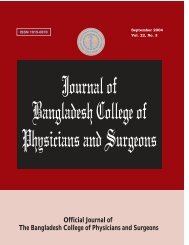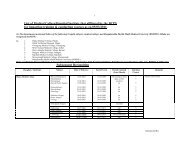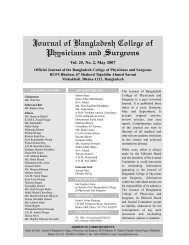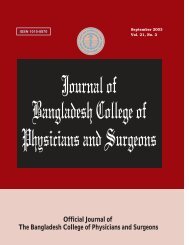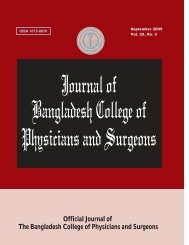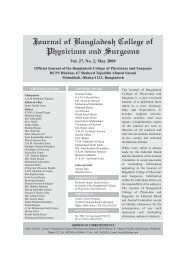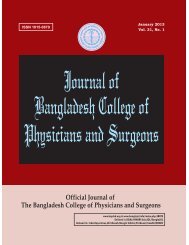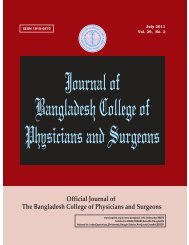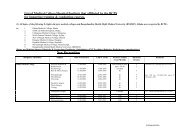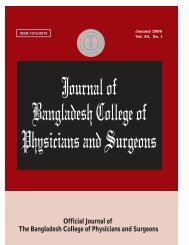May 2008 - bcps
May 2008 - bcps
May 2008 - bcps
You also want an ePaper? Increase the reach of your titles
YUMPU automatically turns print PDFs into web optimized ePapers that Google loves.
Juvenile Idiopathic Arthritis Essential Elements of CareAlthough the primary mechanism of action ofmethotrexate in JIA or adult RA is not clearly known,recent reviews suggest that the anti-inflammatoryeffects of methotrexate seems to be related to theextra cellular adenosine release and its interactionwith specific cell surface receptor 44 .Dose & route of administration:In general, children with JIA, methotrexate therapystarted at a dose of 10 to 15 mg/m 2 /week or 0.3-0.6mg/kg/week. However children seem to toleratemuch higher dose than adult and some series describeusing up to 20-25 mg/m 2 /week in children withrefractory cases, with relative safety in the short term.At doses more than 15 mg/m 2 /week the parental routemay be preferred.A recent multinational, randomized controlled studyby Pediatric Rheumatology International TrialsOrganization (PRINTO) compared 30mg/m 2 /week inchildren with polyarticular JIA who failed to improvewith 8-12.5 mg/m 2 /week. Maximum response wasfound with 15 mg/m 2 /week and there was no addedbenefit of the 30mg/m 2 /week dose over15mg/m 2 /week 47 .Folic acid supplementation:A recent multi center randomized double blindedplacebo controlled trail showed that 2.5-5mg folicacid supplementation 2 days after methotrexatereduced the incidence of increased liver enzyme buthad no effect on the incidence of othergastrointestinal and mucosal side effects 26 .Side effects:Nausea is infrequent and can be lessened by use ofantiemetics like Ondansetron, consideration needs tobe given to be psychological support of children inmethotrexate, in whom habitual nausea maysometimes occur 48, 49 .Sulphasalazine:Three recent studies have confirmed earlier reportsthat Sulphasalazine is effective in oligoarticular &polyarticular varieties of JIA. Usual doses are 40-50mg/kg of body wt/day (maximum 2gm/day). In aplacebo controlled study 10 of 69 patients withdrewdue to side effects, which were reversible 31, 32, 33 .Leflunomide:Leflunomide, an orally administrated inhibitor ofpyrimidine synthesis has been shown to be safe andMR Alameffective long term therapy for adult with rheumatoidarthritis. In a pilot open-label study of children withpolyarticular course JIA, 52% of those receivingleflunomide had a response even though all patientseither had no response to or were intolerant tomethotrexate. To confirm this a total 48 weeksrandomized control multicentre (32 centres in 12countries from march 2002-jan 2003) study wasconducted to compare leflunomide with methotrexatein children (3-17 yrs), with active polyarticular JIA.Of 94 patients, randomized response rate was 89%and 68% in methotrexate and leflunomiderespectively at 16 weeks and improvement wasmaintained at 48 weeks. Methotrexate was used in adose of 0.5 mg/kg/week (25 mg/week) andleflunomide 10-20 mg/day according to body wt.following a bolus dose of 100 mg/day (for l-3 daysaccording to body wt). Methotrexate & leflunomideboth resulted in high rate of improvment in JIApatient (polyarticular type) but at doses used in thatstudy methotrexate was more effective thanleflunomide 62-66 .Monitoring Methotrexate and other DMRDtherapy:Before commencing DMARD therapy baselineinformation regarding CBC, Liver function, renalfunction should be obtained. Full blood count andliver and renal function monitoring is requiredfortnightly until a stable dose is achieved. Thereaftermonthly monitoring for 6 months, increasing to 6weekly is the usual practice 28-30 .TNF α blocker (Etanercept):Tumor necrosis factor was identified in synovial fluidin 45% patient of JIA & found to play aproinflammatory role in pathogenesis.In a randomize double blind multi-centre study, TNFα blocker was found safe, effective in children withpoly articular JIA who did not tolerate or had aninadequate response to methotrexate. At the end ofopen study 74% of patient had a 30% improvement,64% had a 50% improvement & 36% had a 70%improvement 43 .Refractory JIA:Refractory juvenile idiopathic arthritis should beconsidered when the disease does not respond to86


